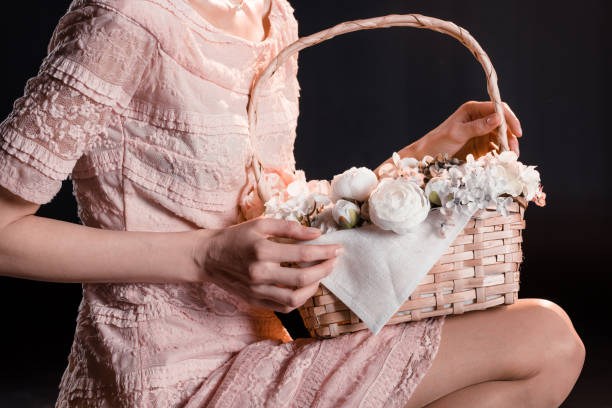
Basket weaving. Basket weaving. In an interview after Bill Shorten’s Budget reply Speech, Education Minister Simon Birmingham used the term this way. Birmingham reacted with disdain when Shorten committed to funding fees for TAFE, sneering at Labor’s “disastrous VET FEE HELP program which subsidised everything from basket weaving to energy healing.”
Shadow Treasurer Chris Bowen called this comment an insult to TAFE instructors. Bowen has a point, for sure. This insult is more powerful because it trivializes and denigrates the crafts that women have traditionally practiced. It also criticizes the women themselves.
This reminds me of a similar jibe that was delivered by Home Affairs Minister Peter Dutton in the March 2013 gay marriage debate, when he told CEOs from leading Australian companies who demanded government action to “stick with their knitting.” Three days later, Greens Senator Janet Rice took out her knitting needles and began to knit rainbow-striped scarves during question time.
Why is it that when dredging for an insult, male politicians turn to traditionally female crafts? It seems their gendered nature, pigeonholed as women’s hobbies – mundane and domestic, unpaid and undervalued – makes them suitable targets for ridicule. We don’t see such sneers at woodwork, metalcrafts, or other “manly” pursuits.
In the past, women’s leisure activities have been characterized as “manly.” This is due to oppressive attitudes towards them. Sandra Harding, a feminist theory pioneer in 1986, wrote that “in virtually all cultures what is considered manly is valued more than what is perceived as womanly.” The insults of Birmingham and Dutton show that the view still holds today, more than 30 years later.
Birmingham’s comments also marginalize and undermine the merits of the highly skilled craft of basket weaving, which has a long history, including Aboriginal culture. Originally used to carry food or babies, these items were created with incredible talent.
Australian Institute of Aboriginal and Torres Strait Islander Studies states that such weaving “expresses culture identity and traditions dating back to tens of thousand of years”. Arnhem Land’s rock art, which dates back over 40,000 years, depicts baskets being carried by figures or ancestor spirits.
The Maningrida Region’s Arts and Culture Website states: “There are spiritual dimensions to weaving which vary depending on the materials used and totemic meaning of the object created.”
Birmingham’s insult enraged Dr Kevin Murray, a former artistic director at Craft Victoria and now adjunct professor at RMIT University, as well as editor of the online craft magazine Garland. “Sure, we can make basket weaving thrive without TAFE funding, but it’s important to stop men in suits from demeaning the art form. What is more meaningful, adding numbers in a spreadsheet or weaving items for people to use that reflect a relationship to the land and traditions? He asked on the Craft in Australia Facebook page.
Two days later, on the same page, the World Crafts Council-Australia posted an announcement of the National Basketry Gathering 2019 in South Australia with the comment, “Basket-makers are proud!”
Birmingham’s insult implies that basket-weaving is a waste, while Dutton is saying that CEOs should focus on their businesses and what they are good at.
Women are familiar with the phrase, “don’t disturb your pretty little mind with that.” Crafts are becoming more and more accepted as suitable subjects for scholarship. Maarit Makela, a Finnish design expert, has stated that “making and its products are seen as essential to research.” They are “strongly linked with the source” of knowledge. We are dealing with the idea that we can learn by making.
Also worth noting is that a significant body of research has confirmed what crafters have long known – that their crafts have mental health benefits. Art has been found to enhance wellbeing – indeed, some psychologists prescribe knitting for their patients.
Crafts can also help to build social bonds, which is a great way to combat the loneliness and isolation that are so prevalent in modern life. Researchers have discovered that participating in crafts can ease trauma. The analysis showed that feelings of pain or agony could be turned into physical activity or symbol imagery by handwork,” writes Finnish research Professor Sinikka Pollanen.
Craft practitioners are increasingly using their skills to create items that are not purely decorative. They actively protest against certain aspects of society, such as Knitting Nannies who are opposed to coal seam gas exploration and yarn-bombers who enhance desolate urbanscapes. Craft is a way for some men to rebel against gender stereotypes. For activist women, it’s an opportunity to draw attention to the limitations placed on them due to their gender. The message is Craft matters; we matter.
